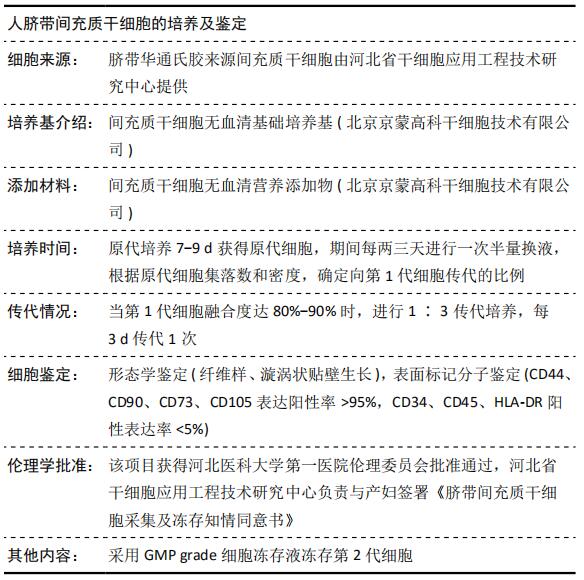中国组织工程研究 ›› 2021, Vol. 25 ›› Issue (1): 6-12.doi: 10.3969/j.issn.2095-4344.2153
• 干细胞移植 stem cell transplantation • 下一篇
脐带间充质干细胞移植治疗缺血性心脏病患者 3 年随访
- 河北医科大学第一医院,1 心内科,2 细胞治疗实验室,河北省石家庄市 050031
Umbilical cord mesenchymal stem cell transplantation in the treatment of ischemic heart disease: a 3-year follow-up
- 1 Department of Cardiology, 2 Cell Therapy Laboratory, First Hospital of Hebei Medical University, Shijiazhuang 050031, Hebei Province, China
摘要:

文题释义:
人脐带间充质干细胞:存在于新生儿脐带组织中,具有分化为心肌细胞乃至其他干细胞的能力,目前研究发现干细胞真正分化为心肌细胞的比例过低,其改善心功能主要通过旁分泌作用实现。该类细胞CD90、CD73、CD44(>95%)高表达,主要组织相容性复合物HLA-DR低表达(<5%),其免疫原性较低,输入后不良反应少见或未见。
左室射血分数:为目前评估心功能的主要指标,其计算方法为:(左室舒张末容积-左室收缩末容积)/左室舒张末容积×100%,正常值> 50%,射血分数下降提示心脏供血不能满足全身代谢需要,表现为心功能下降,主要为冠心病引起,因此射血分数的提高提示心功能改善。
背景:缺血性心脏病的传统治疗方法虽可暂时缓解病痛和改善生活质量,却无法使梗死的心肌修复再生,而干细胞具备的组织再生和多向分化潜能为缺血性心脏病的治疗带来新的契机。脐带间充质干细胞因具备极易分离提取、无免疫排斥、无伦理学争议以及较强的免疫调节作用等优势而成为治疗缺血性心脏病的理想候选种子细胞之一。
目的:探讨人脐带间充质干细胞移植治疗缺血性心脏病3年的临床疗效。
方法:入选2013年1月至2016年6月河北医科大学第一医院收治的冠心病患者8例,随机分为干细胞移植组和对照组,其中干细胞移植组4例行常规治疗并静脉输注人脐带间充质干细胞,对照组4例仅行常规治疗,3年后评估两组患者心功能、生化指标、心电图Ⅱ导联ST段的变化。所有入组患者均签署相关知情同意书,并经河北医科大学第一医院伦理委员会通过。
结果与结论:治疗3年后,两组患者目前均存活。干细胞移植组左室射血分数和短轴缩短率分别较对照组均有升高趋势,但差异无显著性意义(P > 0.05),干细胞移植组治疗前后左室射血分数和短轴缩短率的差值分别较对照组显著升高(P < 0.05),两组间心功能分级无显著变化。两组患者生化指标比较差异无显著性意义(P > 0.05),两组患者治疗前后不同导联心电图ST段的改变不同。该研究仅能表明人脐带间充质干细胞在一定程度上可以改善缺血性心脏病患者的心功能,而对心功能分级、生化指标无明显改善,对心电图各导联的影响不明确,故该治疗方法的意义有待进一步研究。
ORCID:0000-0002-3411-6680(荆宇澄)
中国组织工程研究杂志出版内容重点:干细胞;骨髓干细胞;造血干细胞;脂肪干细胞;肿瘤干细胞;胚胎干细胞;脐带脐血干细胞;干细胞诱导;干细胞分化;组织工程
中图分类号:
